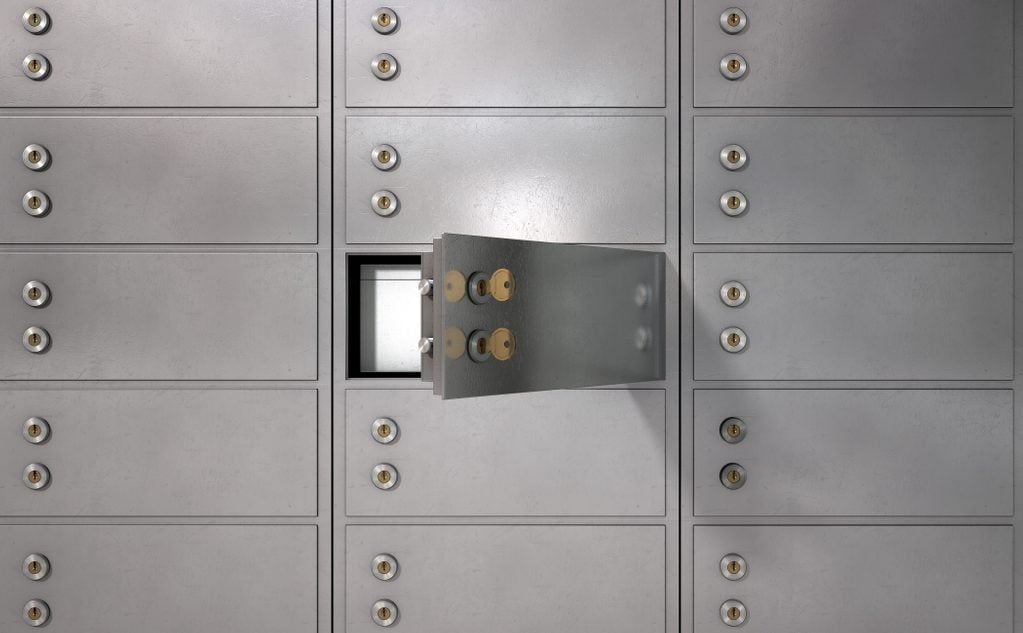Why Your Bank Safe Deposit Box Isn’t Actually Safe
Updated: Nov. 25, 2022

There are an estimated 25 million safe deposit boxes currently leased across the United States. How secure is yours?
If you think your bank is the safest spot to stash your stuff, you might want to think again. A recent article by the New York Times found that each year, hundreds of people report valuable items—ranging from art to jewelry to family photos—as missing or stolen from their bank’s safe deposit boxes. What gives? It’s in a bank, after all, stashed, one would think, securely behind lock and key.
Unfortunately, “there are no absolutely 100 percent secure options” for locking up your valuables, says David P. McGuinn, president and founder of Safe Deposit Specialists, an industry consulting firm. “Even safe deposit boxes are not completely safe if they are not run and secured properly. Safe deposit boxes aren’t fire or waterproof—nor are they immune to theft.” They are also not as strictly regulated as other areas of banking, leaving owners financially vulnerable if their box’s contents go missing.
As the Times’ piece revealed, box holders often learn this lesson the hard way—and many lose thousands (if not millions!) of dollars because they did not insure their missing items. In fact, around 50 percent of box holders believe a bank or government agency insures their box contents against loss or theft, an analysis by SurveyUSA found. Yet property stored in safe deposit boxes is not insured by FDIC, NCUA, or any financial institution, according to McGuinn. He recommends getting your own coverage through your homeowner’s insurance or another private insurance like Safe Deposit Box Insurance, instead. “It’s also smart to obtain pictures and appraisals of all valuable items, in case they are destroyed by fire or flood or stolen during a burglary,” McGuinn says. You’ll also want to know these home security secrets to keep your home and your belongings safe.
Security experts suggest rethinking what you store in a safe deposit box, too. Family heirlooms or other irreplaceable items might be better off in a fireproof safe at home. Eva Velasquez, president and CEO of the Identity Theft Resource Center, also recommends stashing items you need to access regularly or on short notice, such as Social Security cards or passports, in a home safe. On top of providing peace of mind, this option is even budget-friendly: “While purchasing a good safe has a cost, the cost of yearly safe deposit rental adds up to a significant amount over time,” says Steven J.J. Weisman, professor of white-collar crime at Bentley University in Waltham, Massachusetts.
That doesn’t necessarily mean you need to ditch your safe deposit box, however. According to Velasquez, they are still the most ideal places for storing items you do not use on a regular basis, such as birth certificates, diplomas, or life insurance papers. Weisman suggests securing stamp or coin collections, jewelry, and portable hard drives with digitized photos or documents in safe deposit boxes, as well.
If you do choose to use a safe deposit box, you should take extra precautions to ensure your items are properly protected. The Safe Deposit Specialists’ Safe Deposit Report Card lists 30 questions to ask your bank before signing up for a safe deposit box. Opting out of both safe deposit boxes and home safes?


